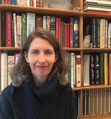Lory Widmer Hess's Blog, page 3
February 2, 2025
Month in Review: January 2025
Greetings! It’s good to be back, after a bit of a break. I’ve come up with some new post graphics, and a new format for this review — I hope you enjoy it!
What I read this month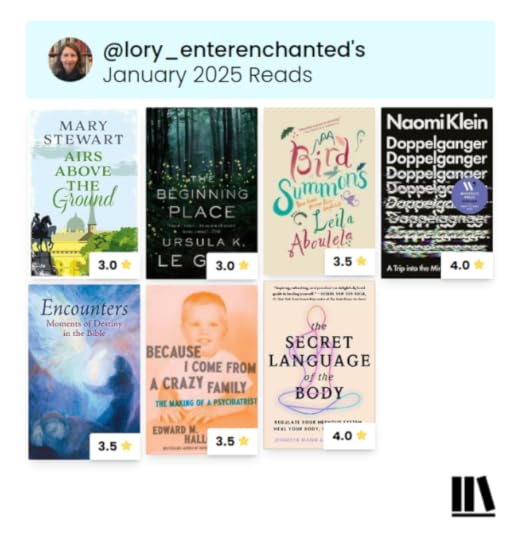 Airs Above the Ground by Mary StewartThe Beginning Place by Ursula K. Le GuinBird Summons by Leila Aboulela
Doppelganger
by Naomi Klein
Encounters
by Ruth Ewertowski
Because I Come from a Crazy Family
by Edward Halloran
The Secret Language of the Body
by Karden Rabin and Jennifer MannTwo books I especially recommend…
Airs Above the Ground by Mary StewartThe Beginning Place by Ursula K. Le GuinBird Summons by Leila Aboulela
Doppelganger
by Naomi Klein
Encounters
by Ruth Ewertowski
Because I Come from a Crazy Family
by Edward Halloran
The Secret Language of the Body
by Karden Rabin and Jennifer MannTwo books I especially recommend…In Doppelganger, Naomi Klein explores a variety of themes touched off by the existence of her own “doppelganger” (the writer Naomi Wolf, with whom she’s frequently been confused). I found it a disturbing but essential read for these times, which are challenging our sense of what is real.
As an antidote to the mirror world, The Secret Language of the Body gave me some major “Aha” moments as I put together its clear explanation of polyvagal theory and accompanying practical exercises with my own history of nervous system dysregulation. For me, it also shed light on the puzzling and infuriating behavior of so many humans, and helped me to see them with more compassion. I’m going to be working on learning this language, and see where it leads.
A disappointmentI was looking forward to Ursula K. Le Guin’s The Beginning Place, one of the few book of hers that I’ve never read, and it started off with a promising premise of two young people meeting in a strange twilight land, but the ending … ugh. I do not like the “sex as redemption” trope at the best of times, and this was a particularly disgusting and insensitive example. Back to the Earthsea books to take that bad taste away.
Currently readingWith my husband, I’ve been reading a book in German — Glennkill by Leonie Swann, published in English translation as Three Bags Full. I read aloud, which is good practice for my fluency, plus if he does the reading, I tend to drift off or get lost. If I don’t understand something, I can stop and ask him rather than looking it up in the dictionary — although I find I tend to let quite a lot of vocabulary slide because I want to move on with the story.
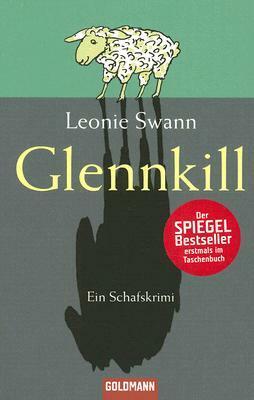
This is a murder mystery seen from the point of view of a flock of sheep, and the author had some fun with trying to get into the sheepish way of thinking (for example, the flock has mixed feelings about their former shepherd, the murder victim, because he didn’t dress himself completely in their wool). The characterization of individual sheep is also charming, and I look forward to seeing how their talents all come together to solve the mystery.
It’s a good choice for learners because the sheep version of German is quite simple, and it’s organized in short sections with plenty of suspense and cliffhangers. It might take us a few months to get through it, but we are enjoying our bedtime installments.
On the blog Reading and writing goals for 2025What’s on your shelf this month?
Linked at The Sunday Post at Caffeinated Book Reviewer, the Sunday Salon at Readerbuzz, and the Monthly Wrap-up Round-up at Feed Your Fiction Addiction
January 13, 2025
Top Ten Tuesday: Reading and writing goals for 2025
I’m still on a blog hiatus till February, but I couldn’t resist joining in with Top Ten Tuesday to share some thoughts about where this blog, and my reading and writing life in general, may be headed this year.
Top Ten Tuesday is a weekly feature/meme now hosted by That Artsy Reader Girl. The meme was originally the brainchild of The Broke and the Bookish. This week’s topic is Bookish Goals for 2025.
Read more freelyI’ve decided, for the time being, to refrain from joining any challenges. I might spontaneously jump into some of the blog events I’ve enjoyed in the past, when they roll around (The 1952 Club, Reading the Meow, Nonfiction November) but I won’t host any myself (that means no Reading the Theatre or Summer in Other Languages this year).
Read more seriouslyIn the last few years, I’ve tended to do a lot of light comfort reading, especially in terms of fiction. I would like to grapple more with serious themes and stories, so long as I can keep myself from becoming depressed by the bad news.
Reading seriously also means reading thoroughly, rereading books, taking notes … not always moving on to the next thing as quickly as possible.
Read more languagesI would like to read books written in languages other than English, either in languages I am learning (French and German) or in translation. I want to hear voices from more corners of the world.
Read more books I ownWhile I depend a lot on e-books from the library, and am very grateful for that convenience, I want to read more of the hardcopy books I keep buying and not reading. At bedtime, I’ll try to stick to paper and slowly make my way through some that way. I also have started keeping track of owned but unread books on StoryGraph. I do not have a numerical goal, but perhaps I’ll count up at the end of the year and see how I did.
Read Ursula K. Le GuinRelevant to the above, I have started rereading the Earthsea books, finally cracking open my complete Saga Press illustrated edition. I also have the urge to read fiction by Le Guin that I have not read yet (like The Eye of the Heron and Always Coming Home), to reread some I don’t remember well (Lavinia, The Lathe of Heaven), and to sample her nonfiction and poetry. She’s one of my favorite authors, and though I don’t love all her books, I always find her writing beautiful and thought-provoking. She was a champion of the power of imagination to change our world, and I can’t think of anything we need more right now.
While I am loath to make an official readalong, if anyone has a similar interest, I hope we’ll find a way to share our thoughts.
Publish lessIn the past, I’ve tried to write a post once a week or so. I’m going to reduce that minimum to once a month, keeping up my month in review posts, focusing particularly on my reading life. If I feel moved to do a book review, discussion post, or other kind of update, I will do so, but I won’t feel obliged.
In the last few years, I’ve also been seeking publication beyond the blog. 2024 was my most successful year in this regard; see this Substack post for everything I had published last year.
I’m so thrilled and grateful to have been able to share my love of words with the world, overcoming the blocks that kept me from writing for so long — due in no small part to the support I found through blogging. But now, ironically enough, I feel a desire to pull back and do more inner work, less outer expression. There’s a reason we have two ears and one mouth, as the saying goes. With so many words wildly flying around right now, what is truly essential?
I do have an idea for a long-term project to occupy me over the next year. If it comes to anything, I will surely let you know.
Learn and engageWhy, then, am I still bothering with this blog at all?
The world is turning in a very scary direction, yet I still believe in the power of language to help us through challenging times. What is essential, to me, is to remain open to transformation while strengthening our sense of what is real. The deepest reality I hold, the foundation of my faith, is that we are all connected, all part of a greater whole. Words aim to be a bridge that let us retain our individuality, while engaging with each other in freedom.
Words are not enough, though; there has to be a wordless attitude of desiring to understand with the heart. Only then can the tools of language do their job.
When things get too overwhelming, it is tempting to me to want to disengage and simply not even try to understand. But I know from experience that that is only a temporary solution. I have to find a way to feel safe, and still engage with what confuses or distresses me. Books are wonderful because they let me stay in a safe space, while bringing me news from a wider world. So many times, that has led to changing the way I engage with the world, with other people, and with myself. I get to try out experiments in living, and then I bring back what I learn into my reading life again, to refine and extend the experiment further.
So although this book blog may seem like a trivial sort of hobby, really it touches into the things I find most important and valuable in life. By keeping it going, even though there are many other things demanding my time and resources, I’m asserting those values. The journey will continue!
And I very much value the connections I’ve made here, too. I look forward to engaging with you and finding out what is important for you this year.
A social media aside: I’ve left Facebook but joined Bluesky. Find me there as @enterenchanted.bsky.social.
Many warm wishes for a wonderful reading year in 2025! Photo by Bich Tran on Pexels.com
Photo by Bich Tran on Pexels.com
December 24, 2024
A poem for the season: Peace on Earth
With this poem by Swiss poet Conrad Ferdinand Meyer, I bid you farewell for a time. I’ll be back in February or so. Till then, my very best wishes to you at the turning of the year.
Peace on Earth
Conrad Ferdinand Meyer
Translated from the German by Lory Widmer Hess
When the shepherds left their berth
And the word of Angels holy
Carried through the portal lowly
To the mother and the child,
Back the heavenly servants filed,
In the starry spaces singing
Till the heavens forth were ringing:
“Peace, oh, Peace! Upon the Earth!”
Since the Angels’ high hallooing
O how many bloody doings
Have wild horses, held by girth
And harness, borne with fearful power!
In how many a holy hour
Sang the spirit choir unsurely,
Pressing, praying, pleading obscurely:
“Peace, oh, Peace … upon the Earth!”
Yet we hold this faith unending:
That those robbers now offending
Weaker souls who suffer dearth
Shall not evermore prevail;
Justice shall not forever fail,
It weaves, it works, through death and terror.
A new empire will rise, the bearer
Of true peace upon the earth.
Gradually its strength is growing,
A sacred order slowly showing,
Forging weapons of peaceful worth,
Swords of flame held by the just,
And a royal lineage must
Blossom forth with strong descendants,
Whose bright trumpets blare their message:
Peace, oh, peace upon the Earth!
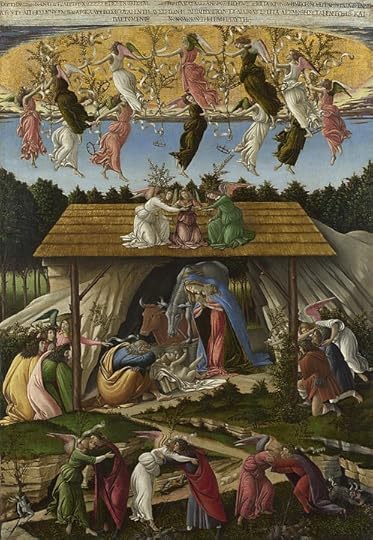 Mystic Nativity by Sandro Botticelli – National Gallery, London, Public Domain
Mystic Nativity by Sandro Botticelli – National Gallery, London, Public Domain
December 22, 2024
2024 Reading in Review – and a look ahead
I am doing my yearly review a bit early, and including my December reading, because after this I’ll be taking a break — scroll down to “Looking Ahead” for some news about that.
But first, what did I read in 2024? It was quite a year!
NonfictionI had a lot of fun reading books for the 12 different categories of the Nonfiction Reader Challenge, which inspired me to get out of my usual comfort zone — though I might not have sought out books on transportation, architecture, pets, or true crime, it was so worth it. I would like to keep pushing myself in this way.
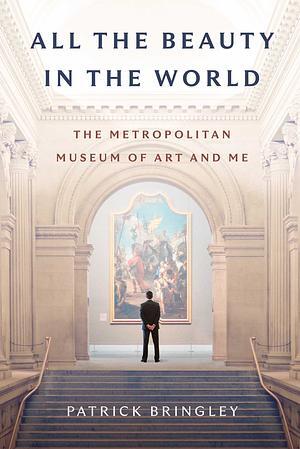 The Collected Schizophrenias by Esme Weijun Wang – Health
Life After Doom
by Brian McLaren – The Future
Circle of Hope
by Eliza Griswold – A book published in 2024
Making It So
by Patrick Stewart – Memoir
American Nations
by Colin Woodard – History
Dewey
by Vicki Myron – Pets
The Brain That Changes Itself
by Norman Doidge – ScienceChartres: Sacred Geometry, Sacred Space by Gordon Strachan – Architecture
All the Beauty in the World
by Patrick Bringley – Culture
Savor: A Chef’s Hunger for More
by Fatima Ali – FoodFalling Upwards by Richard Holmes – Transportation
The Wicked Boy
Kate Summerscale – True Crime
The Collected Schizophrenias by Esme Weijun Wang – Health
Life After Doom
by Brian McLaren – The Future
Circle of Hope
by Eliza Griswold – A book published in 2024
Making It So
by Patrick Stewart – Memoir
American Nations
by Colin Woodard – History
Dewey
by Vicki Myron – Pets
The Brain That Changes Itself
by Norman Doidge – ScienceChartres: Sacred Geometry, Sacred Space by Gordon Strachan – Architecture
All the Beauty in the World
by Patrick Bringley – Culture
Savor: A Chef’s Hunger for More
by Fatima Ali – FoodFalling Upwards by Richard Holmes – Transportation
The Wicked Boy
Kate Summerscale – True CrimeOtherwise, I read books from some of my favorite categories, like relationships and psychology:
The Emotionally Absent Mother by Jasmin Lee Cori I Thought We’d Never Speak Again by Laura Davis Break the Cycle by Mariel Buque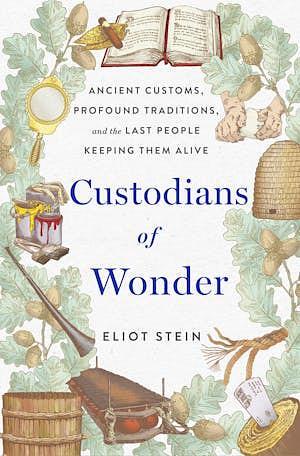
Art, books, music, and culture:
Once Upon a Tome by Oliver Darkshire The Twelve Lives of Alfred Hitchcock by Edward White Custodians of Wonder by Eliot Stein How Sondheim Can Change Your Life by Richard Schoch One Year to a Writing Life by Susan Tiberghien The Release by Elizabeth Jarrett AndrewReligion and spirituality:
The Tears of Things by Richard RohrPaths into the Book of Books by Elspeth Weymann Good Soil by Jeff Chu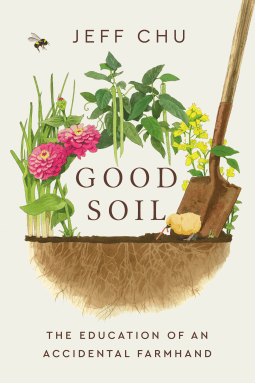
Lots of memoirs and personal essays:
Still Writing by Dani Shapiro The Kindness of Strangers by Salka Viertel Outofshapeworthlessloser by Gracie Gold Heart Berries by Terese Marie Mailhot Moab Is My Washpot by Stephen Fry What My Mother and I Don’t Talk About , edited by Michele Filgate The Recovering and The Empathy Exams by Leslie JamisonRadical Love by Zachary LeviScience and health:
Anatomy of an Epidemic by Robert Whitacker The Wisdom of Your Body by Hilary McBride Heal Your Nervous System by Linnea Passaler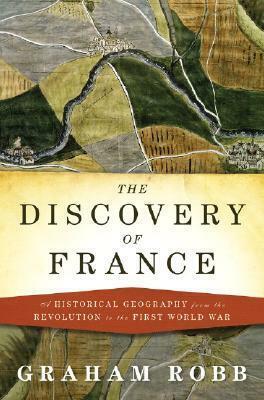
And several books inspired by my trip to France in July:
The Golden Age of Chartres by Rene QueridoI, Labyrinth of Chartres by Jacques PaillotThe Discovery of France by Graham Robb Fiction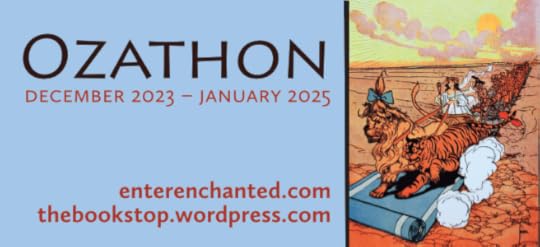
I felt drawn to do a lot of light and comforting reading this year in the fiction category,. This included reading or rereading a goodly number of childhood classics, including all the Oz books, a number of others by L. Frank Baum, and a couple of spin-offs. It was a very Ozzy year!
The Oz Series by L. Frank Baum:
The Marvelous Land of Oz Ozma of Oz Dorothy and the Wizard in Oz The Road to Oz The Emerald City of Oz The Patchwork Girl of Oz Tik-Tok of Oz The Scarecrow of Oz Rinkitink in Oz The Lost Princess of Oz The Tin Woodman of Oz, The Magic of Oz, Glinda of OzOz-related reading:
The Sea Fairies and Sky Island by L. Frank Baum – shares some characters with the Oz books Finding Dorothy by Elizabeth Letts – Based on the story of Baum’s wife, Maud Gage Wicked by Gregory Maguire – Reread of the Oz-inspired novel, inspiration for the hit musical
I also binged on a bunch of books by Joan Aiken, the subject of this year’s Witch Week celebration:
Go Saddle the Sea, Bridle the Wind, and The Teeth of the Gale Fantastic Fables , Weather Witches and Wise Women , A Ghostly Gallery, and Siren Stories The Gift Giving The Serial Garden – Witch Week discussion The Whispering Mountain and Midnight Is a Place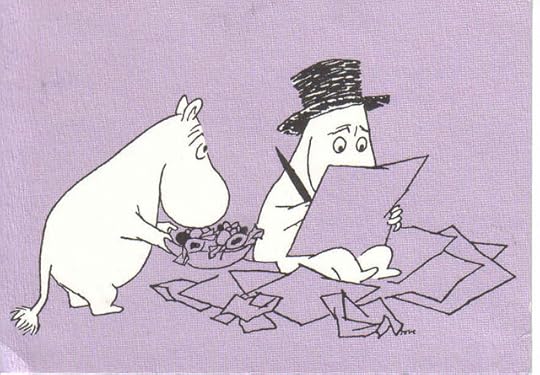
And I polished off six of the Moomin books, filling in the ones I hadn’t read in honor of Moomin Week
Moominpappa’s Memoirs, Tales from Moominvalley, Moominland Midwinter, Moominvalley in November, Comet in Moominland, Moominpappa at Sea by Tove Jansson (for translators see post)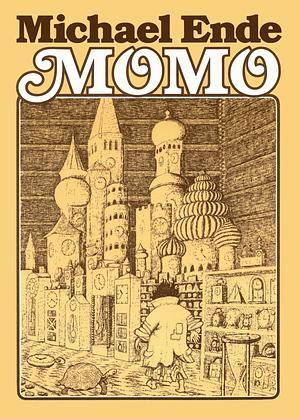
More children’s classics (three in German!):
Skating Shoes and Theater Shoes by Noel Streatfeild Enchanted Glass by Diana Wynne Jones Thursday’s Child and Far To Go by Noel Streatfeild Emil und die Detektive by Erich Kästner Jim Knopf und Lukas der Lokomotivführer by Michael Ende The Cat Who Came in Off the Roof by Annie M.G. Schmidt, translated by David Colmer Roll of Thunder, Hear My Cry and Let the Circle Be Unbroken by Mildred D. Taylor Momo by Michael Ende The School at the Chalet and The Chalet School in the Oberland by Elinor Brent-DyerPlus a couple more fantasy books:
Buried Deep by Naomi NovikThe Secret of Splint Hall by Katie Cotton
One of my proudest achievements of the year had to be re-reading Madame Bovary in the original French, a task that defeated me in college. Otherwise, I managed a few more classics:
The Turn of the Screw by Henry JamesMy Antonia by Willa Cather Madame Bovary by Gustave Flaubert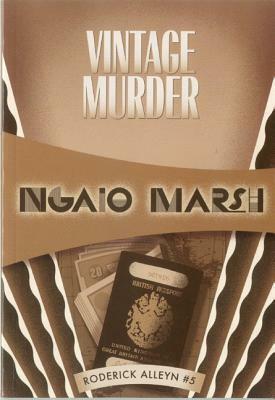
I spent time indulging in mysteries and thrillers, including some theatre-themed ones for Reading the Theatre:
Vintage Murder by Ngaio Marsh Death on the Down Beat by Sebastian Farr Dancers in Mourning by Margery Allingham The Man in the Picture by Susan Hill Everyone in My Family Has Killed Someone and Everyone on This Train Is a Suspect by Benjamin Stevenson Murder Must Advertise by Dorothy Sayers The Murder of Roger Ackroyd by Agatha Christie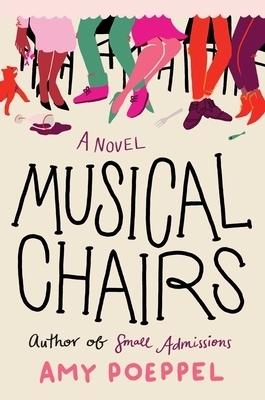
And from time to time I needed a nice romance:
Musical Chairs , Limelight and The Sweet Spot by Amy PoeppelWell That Was Unexpected and Didn’t See That Coming by Jesse Q. Suntano Magic Flutes by Eva IbbotsonLove Lettering by Kate ClaybournThe Lily of Ludgate Hill by Mimi Matthews Happiness for Beginners , Hello Stranger , The Rom-Commers , What You Wish For by Katherine Center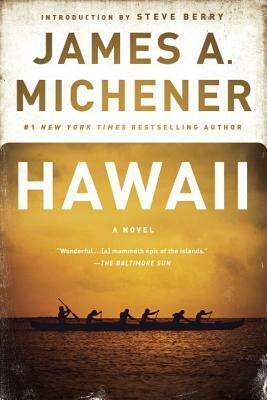
Historical fiction swept me into the past:
The Gilded Mountains by Kate Manning – Colorado in the Gilded Age, through the eyes of a French Canadian miner’s daughter The Crimson Thread by Kate Forsyth – a riff on the myth of Theseus and Ariadne, set in WWII CreteThe Cafe with No Name by Robert Seethaler, translated by Kate Derbyshire – Vienna after the warMeasuring the World by Daniel Kehlmann, translated by Carol Brown Janeway – About two very different German scientists of the Enlightenment Hawaii by James A. Michener – The title says it!The Covenant of Water and Cutting for Stone by Abraham Verghese – Two medicine-themed epic family sagas, one set in India, the other in Ethiopia and New York City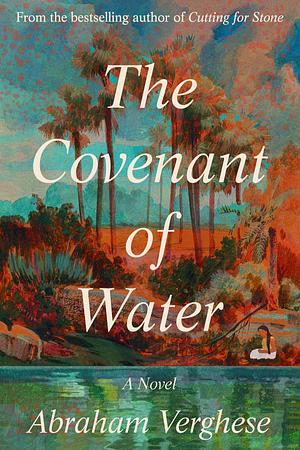
And finally, a few random works of realistic fiction:
The Guest Cat by Takashi Haraide, translated by Eric SellandSignal Fires by Dani ShapiroRemarkably Bright Creatures by Shelby Van Pelt The Forest of Wool and Steel by Natsu Miyashita, translated by Philip Gabriel The Marble Staircase by Elizabeth FairLooking AheadI am doing a caregiving course that is challenging, especially because it’s in German — just understanding the vocabulary is time consuming. I’ll be done with that in February, but at least until then I will be taking a break from the blog.
I certainly plan to return, but I am thinking of some changes — maybe a new WordPress theme, new graphics, a slightly different focus, changing how frequently I post, different kinds of posts (e.g. more discussions, which have lapsed in the last years).
I also feel that I need to take a break from formal reading challenges and events — though I may take part in one or another spontaneously, no year-long challenges or hosting events on my own blog.
As always, thank you for being here — I deeply appreciate my wonderful readers. I wish you the joys of the season (mindful that for many, joy may seem very far away), and the consolations of a good book. I will look forward to reading your year-end summaries, or please comment below with your thoughts and plans.
 In the mountains above Thun
In the mountains above Thun
December 15, 2024
Nonfiction Reader: The Wicked Boy
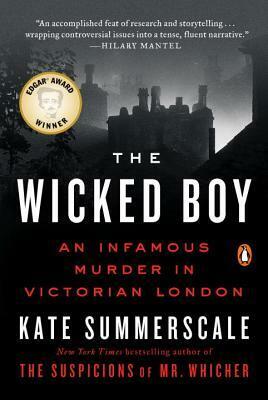
I read this book for the True Crime category of Nonfiction Reader Challenge, a genre that I usually don’t gravitate to. The factual starting point was a matricide by a young boy in Victorian London. Records from Robert’s trial, his subsequent time in the Broadmoor insane asylum, and an intriguing glimpse at this later life as an emigrant to Australia raise questions in our minds about where the wickedness really rested in this case.
I appreciated that Summerscale stayed with the facts for the most part, though she did slip in a certain amount of speculation. It’s hard not to, as the historical record does not have any explanation for why this murder was actually committed. In Australia, Robert gave refuge to another boy who was suffering domestic abuse, and it’s plausible that he did so in empathy, out of his own experience. But we just can’t know what really happened, and that is frustrating. However, history is like that — we can’t know all the answers.
Summerscale rounds out the story with information about the time and place that is often quite interesting, but sometimes goes a bit far off topic – seems like stretching to fill pages. The same material, frustratingly incomplete as nonfiction, could provide rich material for a novel. A fiction writer would not need to attempt to pin down the truth, but to imaginatively create characters that could live out some of its questions.
As it is, Robert remains a distant and unapproachable figure, since we have no direct word from him about what was going on inside him during his remarkable life, through his childhood in London, his growing up in Broadmoor, his service in the Great War, and his adulthood in Australia. We will just have to wonder, and hopefully to look more carefully at the stories that are going on around us. They, too, might conceal mysteries we would do well to penetrate.
Kate Summerscale, The Wicked Boy (Penguin, 2016)
Read for the Nonfiction Reader Challenge — True Crime category
This is my final post for the Nonfiction Reader Challenge. I really enjoyed participating this year and discovered a number of books I would not have read otherwise. While I think I need a break from formal challenges next year, I hope it will inspire me to keep reading from different nonfiction genres, including those I tend to avoid. Thanks for a great challenge!
December 12, 2024
Knitting By Heart — A book project worth supporting
Calling all knitters! Have you ever wanted a resource that would guide you through a process of creating your own clothing, rather than always having to be dependent on patterns devised by others? Are you interested in how the products of the natural world and the human form can come together harmoniously, honoring the beauty inherent in body, mind, and spirit? Then here is a project you will be interested in.
I’ve been acquainted with Renate Hiller and Mikae Toma and the work of the Fiber Craft Studio in Chestnut Ridge, New York, for more than two decades. As their student, and later colleague at Threefold Educational Foundation, I witnessed much of their process as they developed this new way of thinking about and working with knitting as a creative journey. It was very exciting and inspiring, and I was always hopeful that they would find a way to share it with the world. They began to compile their projects and reflections into a book, Knitting By Heart, which has gone through many phases of development.

In recent months I helped them edit the manuscript and develop a proposal that we offered to publishers. There was significant interest, but in the end they decided on self-publishing as the best way to realize their vision.
They have created a Kickstarter campaign to raise funds for the final stages of production, including adding beautiful professional photography. Please check out the campaign and consider supporting it. (I am no longer actively involved, so none of these funds will go to me.)
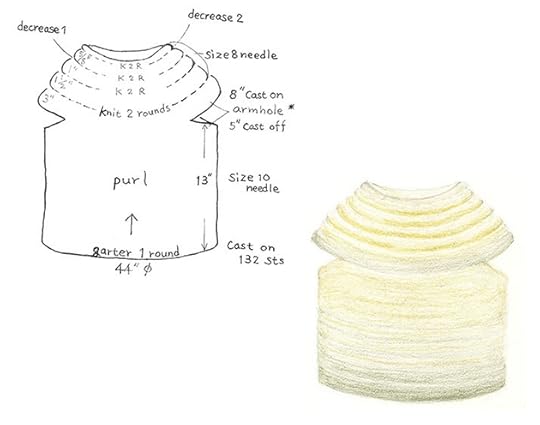
If you have any questions, let me know, or use the Q&A on the Kickstarter page. I’m very hopeful that after many years, this project will finally come to completion! It will truly be a gift to the world, for all who want to work with their hands in a healing and enlivening way.

December 8, 2024
#Ozathon24: The Dangers of Enchantment
As the year comes to an end, I am wrapping up my personal Ozathon — there is still January to finish if you’re following the book-a-month plan, but I read the last two books in quick succession and will discuss them here.
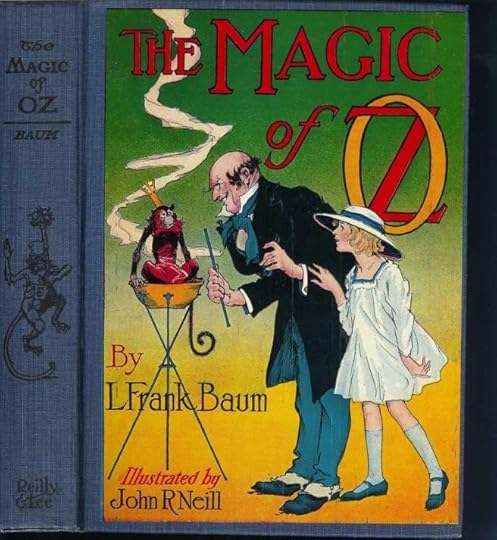
The second-to-last entry in the series, The Magic of Oz, was perhaps the weakest premise– it’s centered around the quest to find a birthday present for Princess Ozma. Baum loved gift-giving, and at an earlier stage of life ran a general store where he improvidently insisted on carrying all sorts of impractical and extravagant items. It was the kind of place where you might find a gift for a fairy who has everything (if not really suited for inhabitants of a desolate Midwest). So this theme surely resonated for him, though it doesn’t make much of a plot device.
However, there is a startling episode where Cap’n Bill and Trot set out to find a Magic Flower as their present, and get stuck on the island where it grows. Not only can they not move, rooted to the spot, but they are starting to shrink. Is this a warning against the ills of consumerism, which is depleting our resources and threatening to destroy all of us? I do not think Baum meant it that way, but it is a disturbing example of the dangers of magic. In our time, when we can do so many amazing and truly magical things, we would do well to restrain ourselves before stepping onto a “magic island” from which we will find no escape.
Otherwise, in this book we get the Nome King trying to conquer Oz again, other wicked forces joining with him and mutually plotting to outwit each other again, and the Water of Oblivion coming to the rescue again. Baum tended to repeat himself, with variations to be sure, but here not coming up with much that was truly new and interesting.
An exception to that was the word PYRZQXGL, which if one can only find the way to pronounce it, allows one to transform into anything. I don’t know about you, but I spent quite a bit of time trying to pronounce PYRZQXGL when I was reading the books as a child — alas, without success. The importance of correct pronunciation was perhaps impressed upon me at that point, however.
A peculiarity of Oz that became even more prominent in these latter books is that though Baum keeps saying it’s an enormous land with many diverse countries within it, so many that Ozma can’t possibly keep track of them all, it’s also so small that the characters can travel to its limits within a day, or at most two. When I was a child I had a very foggy notion of how far one could walk in a day, so I didn’t pay much attention to that, but now I know it would make a pretty small country. Actually, the dimensions of Oz seem to grow or shrink according to the demands of each book and its plot; if it needs characters to wander around for days, they can do that, but if they need to get to their goal quickly, that can happen as well.
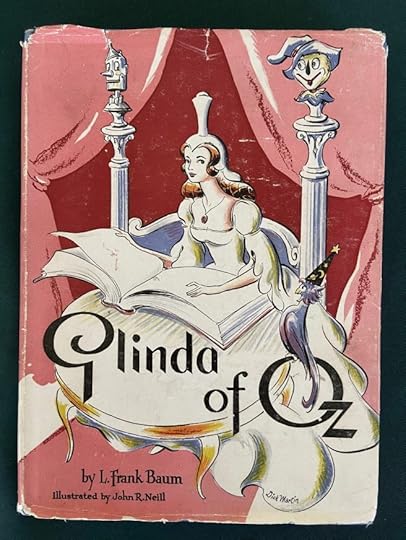 A cover design by Dick Martin
A cover design by Dick MartinThis may annoy people who seek consistency and realism in their fantasy, but if you’ve gotten this far you are not one of those people, so I’ll just leave that as an aside. The good thing is that in Glinda of Oz, Baum made a big leap from the ho-hum birthday present quest to the most important endeavor of all: keeping peace between two warring factions. In the Land of Oz, this means Ozma will have to go to them and insist SHE is the supreme ruler in the land.
I’m not sure how much Baum noticed what a bad ruler Ozma really is; she hardly leaves the Emerald City and has long let all kinds of injustices proliferate. (See my post on The Lost Princess of Oz.) But in Baum’s real-life world, which had just known the devastation of the Great War, such an intervention of magical authority from above might have seemed like the only solution to stop the madness. In any case, he keeps returning to it even after all its failures.
Leaving aside the question of Ozma’s actual effectiveness as a ruler, when Ozma and Dorothy arrive at the land of the warring Flatheads and Skeezers, they find that there can be far worse forms of government. The Flatheads, whose brains are kept in cans outside their heads, are ruled by a “Su-Dic” (Supreme Dictator). He is elected by the people, but ensures he’s perpetually in office by counting the votes himself, and keeps himself in power by stealing other people’s brains. (I will leave it to you to consider whether this still might be going on in another time and place.)
Ozma thinks since he’s so bad, his enemy, the ruler of the Skeezers, must be good, but she turns out to be a vain and cruel witch who has also stolen her magic, from the rightful rulers of the Flatheads. When Ozma and Dorothy come to her on their peace-making mission they end up being trapped underwater, and the rest of their friends (an assemblage of nearly all the main characters from the other Oz books, headed by Glinda and the Wizard) must come to their rescue.
The underwater city, like the island of the magic flower, gives another nod to the dangers of enchantment — when the ruling witch is herself incapacitated, no one else knows how to raise it to the surface. An investigation ensues, with a flavor of scientific experimentation, as the island itself is a mix of magic and technology. Baum’s magical worlds were always influenced by his fascination with the scientific advances of his day, and though they can’t be called science fiction, I imagine they had an impact on many creators of that genre.
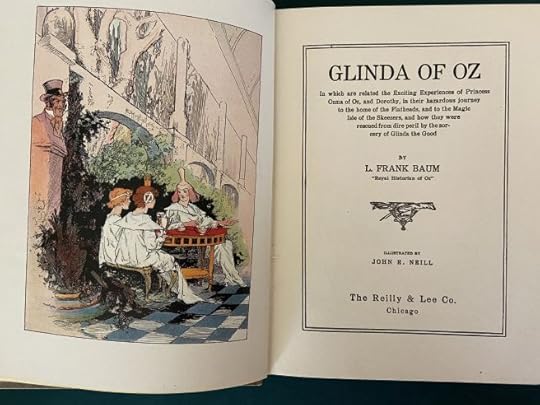
Along with its magical-scientific-mystery plot, Glinda gives us some acerbic commentary on the ways of warring rulers, and also an entertaining fairy-tale like sequence where a young hero has to gain a magical boon from yet another witch (who is not truly evil, but likes to be left alone). And it has some of the series’ most memorable images of feminine power, as it takes all of the main female characters — Glinda, Ozma, and Dorothy — to bring about resolution, with the help of the three female Adepts who are the good rulers of the Flatheads .
After some weak and disappointing volumes in the latter part of the series, this last book has much more to recommend in it, and I am glad that Baum went out in style. At the end of this yearlong quest, I am left with a lasting impression of the inventiveness, joy of discovery, and inner moral challenge that make up the best of all fantasy. Finishing the whole series has been quite an adventure, and if you shared it in whole or in part with me, thank you! Be sure to visit my co-host Deb at The Book Stop for more Ozzy posts.
November 30, 2024
Month in Review: November 2024
This has felt like a really long month in many ways, with so much going on. In terms of reading and blogging alone, it started with what turned out to be the final Witch Week, celebrating the centenary of Joan Aiken’s birth. I found it a wonderful finale to an event I started back in 2014, and I am very grateful to the hosts for the last few years, Chris Lovegrove and Lizzie Ross. I hope you’ll go back to check out some of the posts.
I was inspired to read a couple more books by Aiken this month, too, not wanting to let the magic go. And to continue with children’s books, I finished reading Momo in German, quite an accomplishment for me; it also turned out to be perfect timing for German Literature Month. And I read the last three books in the Oz series, completing the Ozathon readalong I started last December – see here for thoughts on books 11 and 12; my final post will be up next month.
In need of more light reading, I sampled some of Katherine Center’s romances (thanks Jeanne of Necromancy Never Pays for the inspiration), but also found the energy for some thoughtful nonfiction, including my last book for the Nonfiction Reader Challenge. And I completed a writing book I’ve been working through all year. Maybe that’s why the month felt so long …
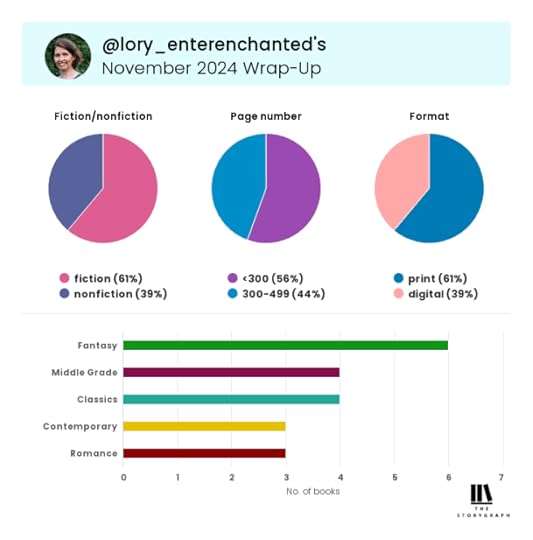 Here’s what I read in November:
The Tin Woodman of Oz
,
The Magic of Oz
,
Glinda of Oz
by L. Frank Baum – Rereads, Ozathon
Momo
by Michael Ende – Reread, but in German, German Literature Month
The Whispering Mountain
and
Midnight Is a Place
by Joan Aiken – Rereads
Good Soil
by Jeff Chu
How Sondheim Can Change Your Life
by Richard Schoch
The Empathy Exams
by Leslie Jamison
Happiness for Beginners
,
Hello Stranger
,
The Rom-Commers
,
What You Wish For
by Katherine Center
The Tears of Things
by Richard Rohr
Break the Cycle
by Mariel Buque
The Wicked Boy
by Kate Summerscale – Nonfiction Reader, True Crime category
One Year to a Writing Life
by Susan Tiberghien
Thursday’s Child
by Noel Streatfeild – Reread
Here’s what I read in November:
The Tin Woodman of Oz
,
The Magic of Oz
,
Glinda of Oz
by L. Frank Baum – Rereads, Ozathon
Momo
by Michael Ende – Reread, but in German, German Literature Month
The Whispering Mountain
and
Midnight Is a Place
by Joan Aiken – Rereads
Good Soil
by Jeff Chu
How Sondheim Can Change Your Life
by Richard Schoch
The Empathy Exams
by Leslie Jamison
Happiness for Beginners
,
Hello Stranger
,
The Rom-Commers
,
What You Wish For
by Katherine Center
The Tears of Things
by Richard Rohr
Break the Cycle
by Mariel Buque
The Wicked Boy
by Kate Summerscale – Nonfiction Reader, True Crime category
One Year to a Writing Life
by Susan Tiberghien
Thursday’s Child
by Noel Streatfeild – Reread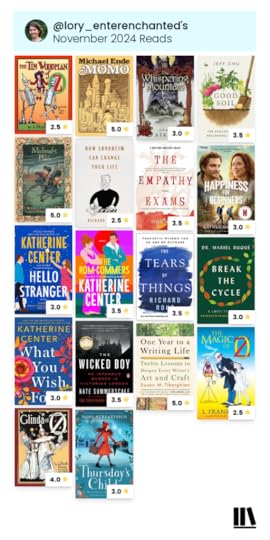
With so much reading to recap, I don’t even have the energy to go into language and life this month. I’m still here, still trying to communicate, that’s all I can say. I hope you are too.
Linked at The Sunday Post at Caffeinated Book Reviewer, the Sunday Salon at Readerbuzz, and the Monthly Wrap-up Round-up at Feed Your Fiction Addiction
November 24, 2024
#Ozathon24: Losing steam
It’s painful to admit, but I am getting tired of the Oz books. Having completed books 11 and 12 — The Lost Princess of Oz and The Tin Woodman of Oz — I can feel Baum’s weariness and distraction, understandable since his health was failing and World War I was raging. Both books do have good bits, but also some frustrating qualities.
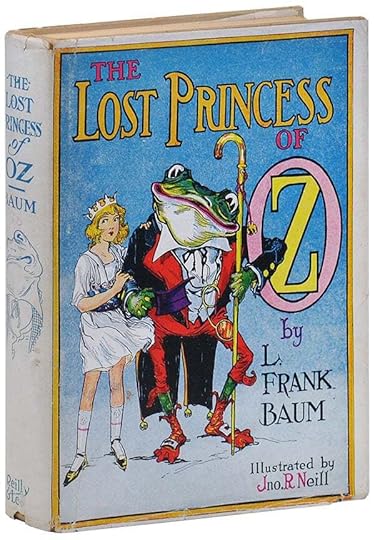
Lost Princess is stronger overall, with a fine premise — what if all the magic objects in Oz were stolen, along with Ozma herself? Of course, a quest through the strange and unexplored lands of Oz has to ensue, with a search party including Dorothy, Button Bright, the Patchwork Girl, and the Wizard. There are some good elements along the way: Button Bright’s annoying propensity for getting lost has some purpose in the plot, and the villain, when they find him, is bracingly cynical.
A side plot has Cayke the Cookie Cook and her friend the giant Frogman seeking Cayke’s giant gold and diamond dishpan (a quirky addition to the magic items of the kingdom). Here is some potential for satire, for the Frogman is a fraud whose vaunted wisdom is just hot air, dispelled when he unwittingly bathes in the Truth Pond.
Actually, as I write about it, I realize how many good parts there were in the book. But on this reading, I found that they just didn’t quite gel. The Frogman’s plunge into humility goes by largely unremarked by the other characters. The villain makes an unlikely 180 degree swerve to peace and love at the end. (Wishful thinking in response to the horrible war, no doubt.) And of course, Dorothy conveniently has her Magic Belt along to save the day, once she figures out how to use it — unaccountably, she has forgotten that she could use it quite well in Ozma of Oz.
An actively disturbing incident occurs when the search party comes to a city where the inhabitants drink a magic potion that gives them super strength, enabling them to use giants as their slaves. This is presented as an amusing reversal of the usual order of things; nobody objects to the cruel treatment of the giants. The group goes blithely on its way with a gift of the magic potion.
Although Oz is supposedly a beneficent autocracy, where Ozma and Glinda use their powers to protect the people, they frequently display blind spots and areas of indifference, of which this is perhaps the most egregious example. Of course, if they did see and correct every single transgression, there would be no freedom at all. Do freedom and indifference have to go hand in hand? That would be an interesting question to explore, but Baum doesn’t go there.
Anyway, something didn’t quite sit well with me this time, although I know many find this book a highlight of the latter part of the series.
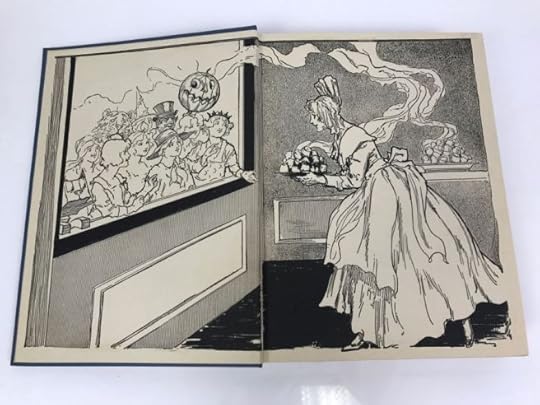 Endpaper illustration by John R. Neill
Endpaper illustration by John R. NeillTin Woodman also starts well: When a passing traveler visits him and the Scarecrow in his tin palace, the Tin Woodman tells the tale of how he left the girl he loved when he became tin. The traveler remarks that when the Woodman gained his heart from the Wizard of Oz, he should have returned to the girl who was surely pining for him.
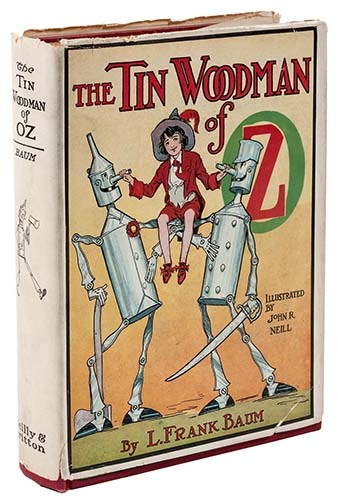
It’s a good inciting incident, and the climactic meeting with the girl (who has NOT been pining) is funny with a tinge of horror, but the rest of the book is a mess, plot-wise. For no good reason, the party wants to avoid their friends in the Emerald City who could help them to their goal. So they wander around, have disconnected adventures, get into trouble by ignoring signs of danger, and eventually have to be rescued by Dorothy and Ozma anyway. Polychrome has made one of her random descents from the sky, and also provides fairy magic as needed, once she remembers she has it.
Baum’s weakest point as a fantasist is providing limits and rules for magic so that it can’t just effortlessly solve problems. It’s great that his fertile imagination gives rise to all kinds of funny and weird and surprising inventions, but these have to exist within a coherent structure that isn’t just “anything goes.” His laxity in that regard is becoming frustrating by this point in the series.
Again, there’s potential for satire. The Tin Woodman may be kind-hearted, but he’s vain and proud and does not want to sully his shining image. The Scarecrow is not as smart as he thinks he is; once, as he’s pontificating about thinking, Polychrome merely smiles, as the narrator makes a sly remark that she knows more about thinking than he does. But by this point in the series Baum has gotten into conflict with his own talent for ironic self-critique. His Oz creations had become popular, and so they had to be beautiful and amazing and wonderful, which tends to make them bland and boring. When an urge to puncture that surface comes in, it’s quickly passed over.
In spite of these weaknesses, I will certainly continue, with only two books left — how will they strike me? How have these struck you, if you’ve made it this far?
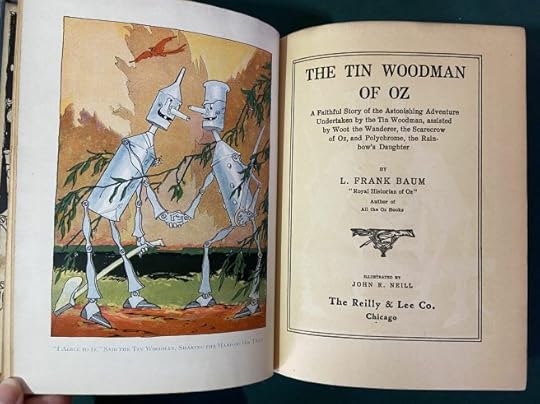 Frontispiece by John R. Neill
Frontispiece by John R. Neill
November 17, 2024
German Literature Month: Momo

In Michael Ende’s modern fable Momo, first published in 1973, the title character is a young girl who lives in a ruined amphitheater on the outskirts of an unnamed European city. Momo’s outer appearance is a bit strange, with her wild black hair and man’s jacket that is too big for her, but she has an outstanding ability that soon attracts many visitors: she can listen. Simply by listening, she enables friends-turned-enemies to resolve their conflicts. Storytellers are inspired when she is in the audience. And children know that their play takes flight when Momo is listening.
But mysterious men dressed in grey begin to convince people to stop wasting their time on friendship or stories or children, and instead to save up precious seconds in their “time bank”. Only Momo can hear their real thoughts, their desperate hunger that drives them to suck time away from human beings … and her wondering response is “Does no one love you?”
The thieves of time have visited all of us. Never has a society been so obsessed with and so successful at saving time, nor so exhausted and depressed. Meaningful work is steadily being sucked away, and deaths of despair are on the rise. The hunger for love fuels all kinds of addictions. Momo’s gift of listening leads her into the depths of the heart to save her city; we can learn from her journey as we face our own struggles.
I’ve read Momo before in English, but it’s been a while. As I read through it this time in German — slowly! — I thought how timely it remains. And while at one time I thought Momo’s gift of listening was not that exciting, I now realize ever more how important it really is. Listening is more than merely hearing, more than letting sensations wash over us. It turns the act of giving attention into a doorway of creation. It’s what I started to grasp through the spiritual direction training I recently completed, and what I want to continue to practice in as many ways as possible.
I’m glad to get to highlight this classic for German Literature month, and wanted to note that it also marks my final book of the StoryGraph German Challenge, for which I read 8 books over the course of a few years. I’m quite amazed that I managed to read half of those in German!
In case you’d be interested, here’s the challenge list with links to my reviews:
Any book originally written in German: Measuring the World by Daniel Kehlmann, translated by Carol Brown JanewayA children’s or middle grade book: Emil und die Detektive by Erich KästnerA classic: All Quiet on the Western Front by Erich Maria Remarque, translated by A.W. WheenA modern classic: Momo by Michael EndeA fantasy or sci fi book: The Neverending Story by Michael Ende, translated by Ralph ManheimA book that many German/Swiss/Austrian kids had to read in school: Krabat by Otfried PreusslerSet in an existing place in a German-speaking country: The Cafe with No Name by Robert Seethaler, translated by Katy Derbyshire (set in Vienna)By an author who’s not from Germany: Kindergeschichten by Peter Bichsel (a Swiss author)If you’ve read any of these, I’d love to hear your thoughts!
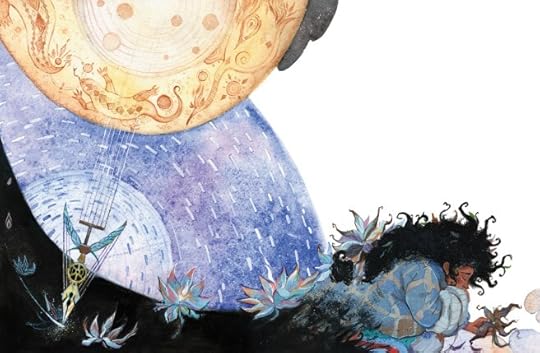 Beautiful illustration by Anastasia Bezgubova from this gallery on Behance
Beautiful illustration by Anastasia Bezgubova from this gallery on Behance

